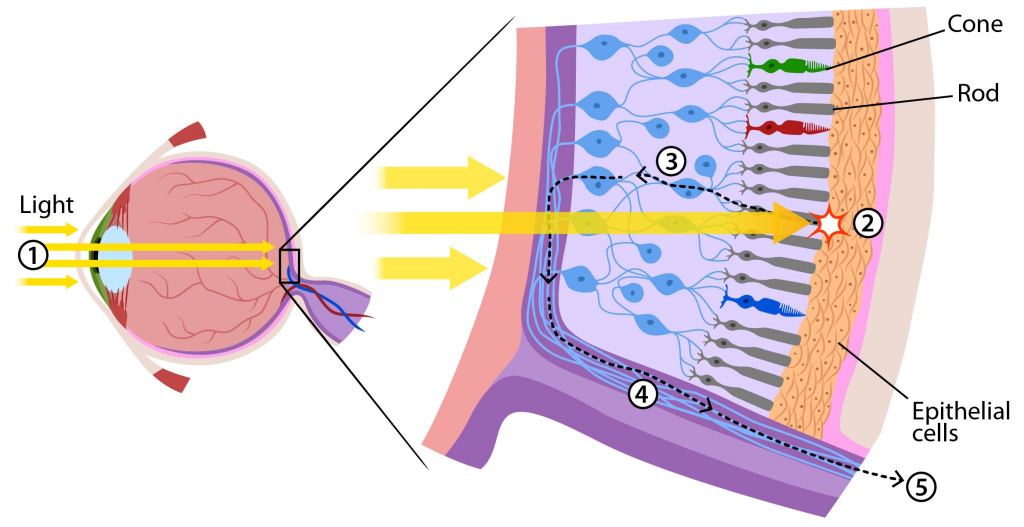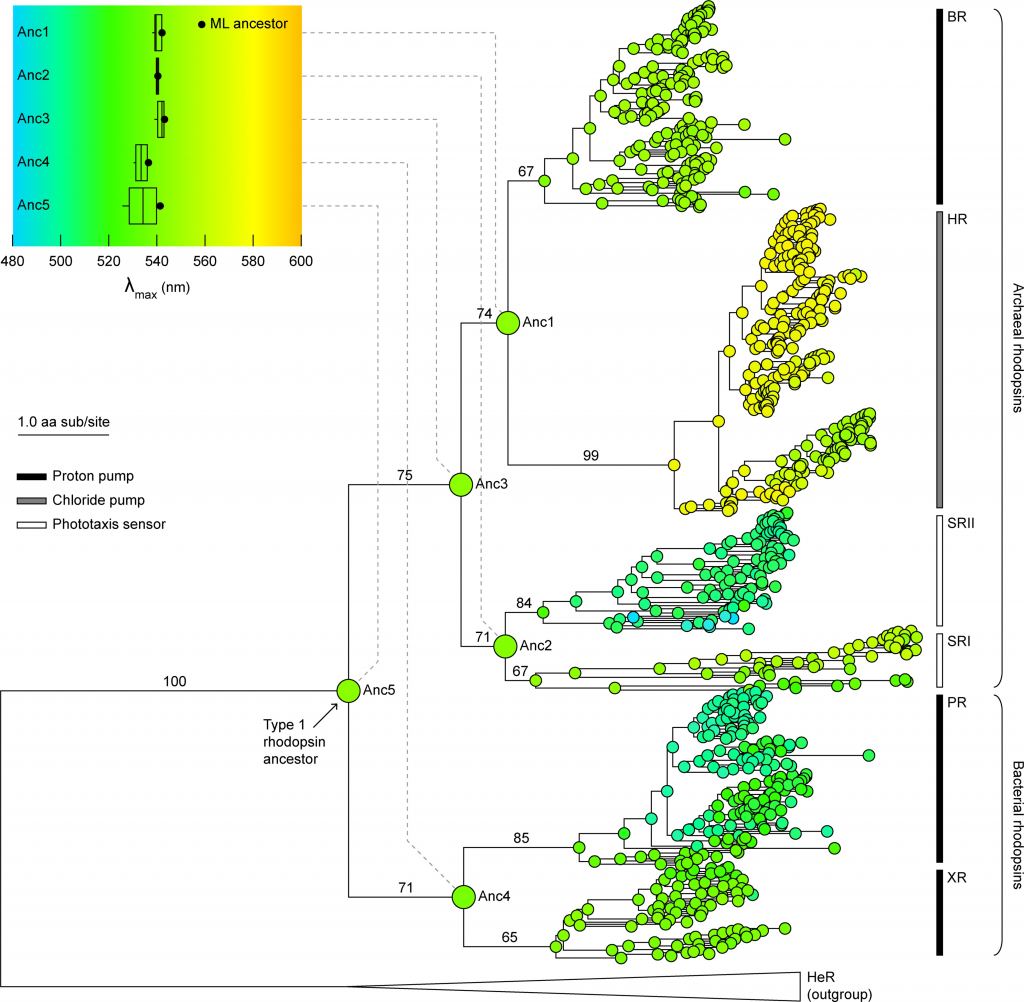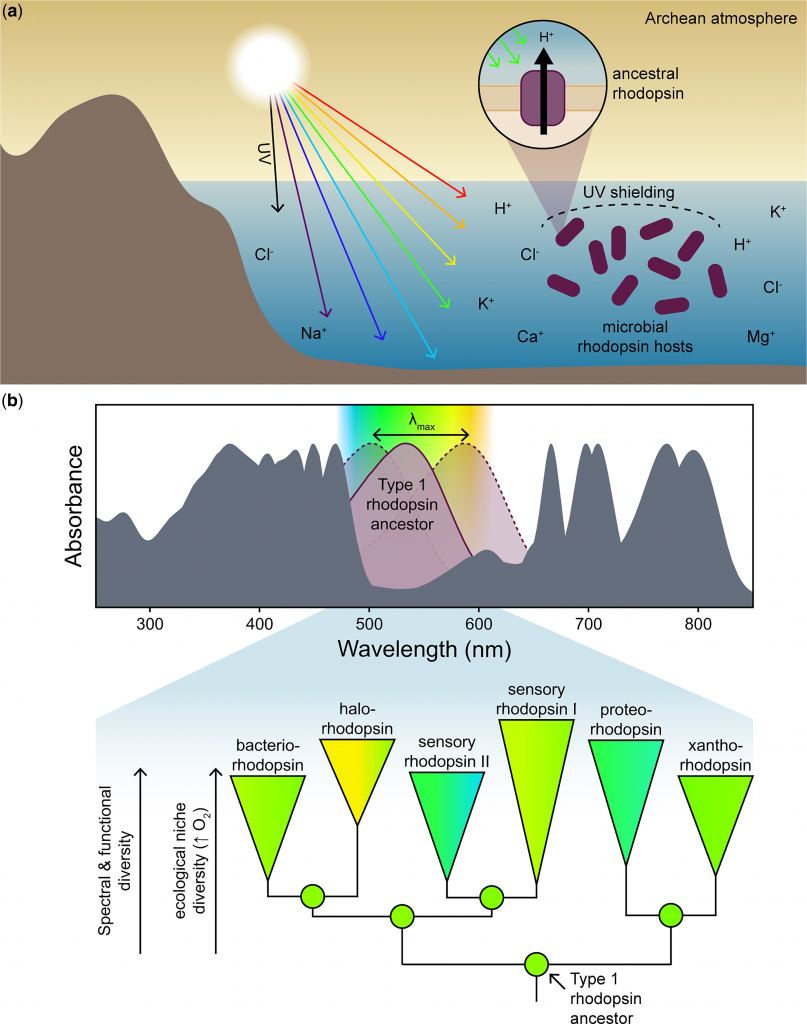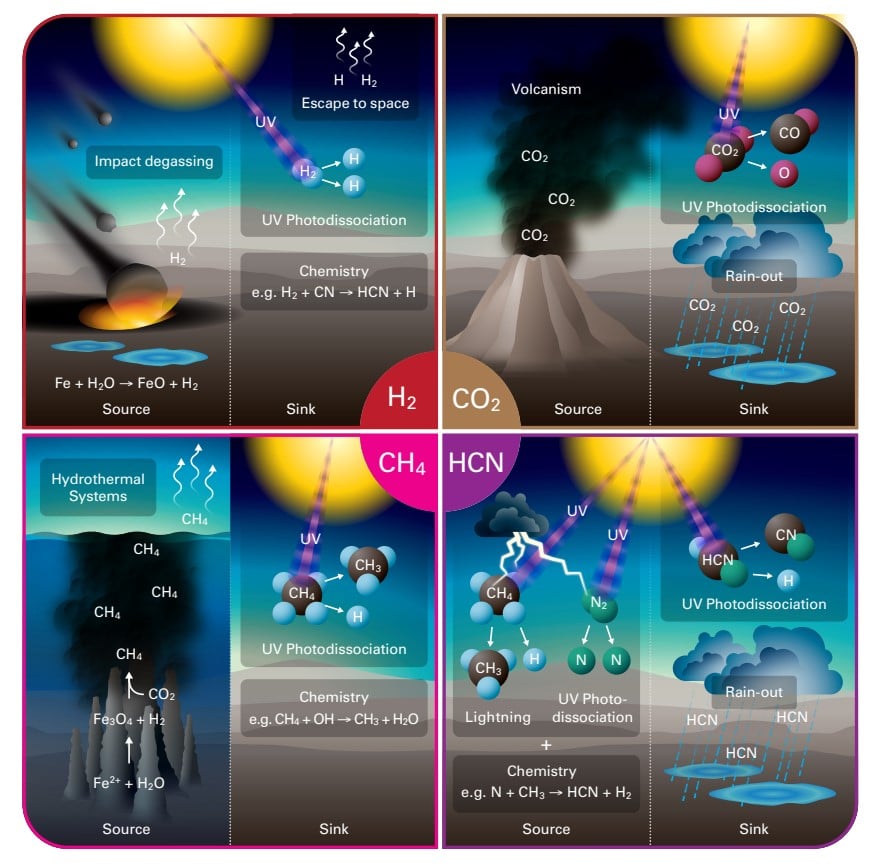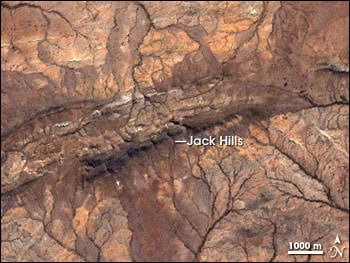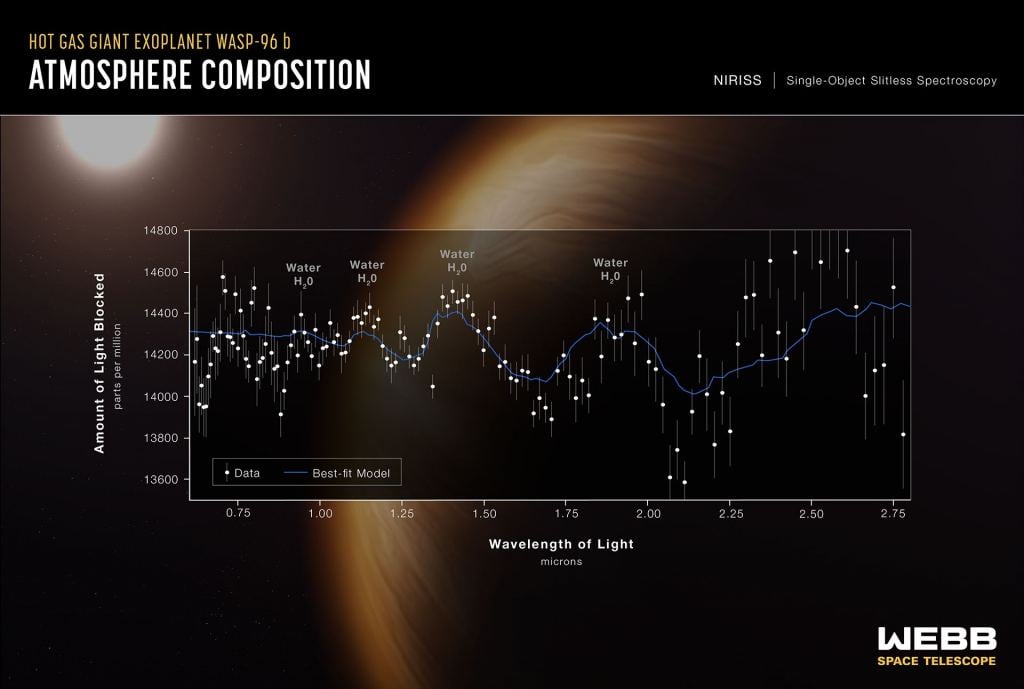Will we discover simple life somewhere? Maybe on Enceladus or Europa in our Solar System, or further away on an exoplanet? As we get more proficient at exploring our Solar System and studying exoplanets, the prospect of finding some simple life is moving out of the creative realm of science fiction and into concrete mission planning.
As the hopeful day of discovery draws nearer, it's a good time to ask: what might this potential life look like?
A team of researchers at the University of California, Riverside, looked at ancient Earth and some of its first inhabitants to shed some light on what simple life on other worlds might look like and what the atmospheres might look like.
Earth is much different now than when it hosted only simple life. The Great Oxygenation Event (GOE) changed Earth forever and set it on the path to becoming the planet it is today, with an oxygen-rich atmosphere and complex life. Before the GOE, Earth's atmosphere was much different, and life drove the change. That brief history illustrates an important fact: life and its environment are intertwined.
"Life as we know it is as much an expression of the conditions on our planet as it is of life itself."Betul Kacar, study lead, University of Wisconsin-Madison.
Earth's early life forms lived in a comparatively energy-poor environment, in an oxygen-poor atmosphere. Sunlight was the only readily available energy, and long before photosynthesis evolved, life forms used sunlight differently. They used proteins named rhodopsins to capture solar energy, and these proteins were a simpler way to use energy from the Sun than the more complicated photosynthesis.
"On early Earth, energy may have been very scarce. Bacteria and archaea figured out how to use the plentiful energy from the Sun without the complex biomolecules required for photosynthesis," said UC Riverside astrobiologist Edward Schwieterman in a press release. Schwieterman is the co-author of a new study published in Molecular Biology and Evolution. The study is " Earliest Photic Zone Niches Probed by Ancestral Microbial Rhodopsins," and the study lead is Betul Kacar, an astrobiologist at the University of Wisconsin-Madison.
As proof of their usefulness, rhodopsins didn't disappear with the early life forms that originated them. They're widespread in organisms today, including us. They're present in the rods in our eyes' retinas, where they're responsible for vision in low light. They're also found in modern, simple life in places like saltern ponds. Their presence in modern life provides a link to the evolutionary history of rhodopsins. The researchers are exploring that link using machine learning and protein sequencing. Using those tools, the researchers could track the proteins' evolution over geologic time scales.
Looking around at Earth's life and atmosphere now is not a good indication of how to search for life on other worlds. Our current atmosphere is oxygen-rich, but early Earth's atmosphere might've been more like Venus', according to some research. By tracking how rhodopsins evolved, the authors of the new paper built a family tree for the proteins. They were able to reconstruct rhodopsins from between 2.5 to 4 billion years ago.
Much of our search for life focuses on planetary atmospheres. Specific atmospheric molecules can be bio-markers, but to know which ones could signal the presence of simple, early life, we need to know in detail what Earth's early atmosphere was like once the planet hosted simple life. "Decoding the complex relationships between life and the environments it inhabits is central to reconstructing the factors that determine planetary habitability over geologic timescales," the authors write in their paper's beginning, and that sets the stage for the results they present.
"Life as we know it is as much an expression of the conditions on our planet as it is of life itself. We resurrected ancient DNA sequences of one molecule, and it allowed us to link to the biology and environment of the past," said the study lead Betul Kacar.
The team's research parallels the genealogical testing available to us today. We can submit our DNA and learn much about where we came from. The team's intense work is a much deeper dive than that, but the comparison is helpful. "It's like taking the DNA of many grandchildren to reproduce the DNA of their grandparents. Only, it's not grandparents, but tiny things that lived billions of years ago, all over the world," Schwieterman said.
The researchers discovered differences between ancient and modern rhodopsins in the light they absorbed. According to the genetic reconstructions, ancient rhodopsins absorbed primarily blue and green light, while modern rhodopsins absorb blue, green, yellow, and orange light. This is a clue to the environmental differences between ancient and modern Earth.
We know that ancient Earth had no ozone layer before the GOE, which occurred about 2.0 to 2.4 billion years ago. The ozone layer can't exist without free oxygen in the atmosphere, and without an ozone layer, life on Earth was subject to much more UV radiation than it is now. Currently, the Earth's ozone layer absorbs between 97% and 99% of the Suns' UV.
The researchers think that ancient rhodopsins' ability to absorb blue and green light and not yellow and orange light means that the life that relied on it lived several meters deep in the water column. The water column above the organisms protected them from the harsh UVB radiation at the water's surface. After the GOE, the ozone layer provided protection from the Sun's UV radiation, and life evolved more modern rhodopsins that can absorb more light. So modern rhodopsins can absorb yellow and orange light along with blue and green light.
Modern rhodopsins can absorb light that photosynthetic chlorophyll pigments cannot. Striking a note of evolutionary elegance, modern rhodopsins and photosynthesis complement one another by absorbing different light, though they're unrelated and independent mechanisms. This complementary relationship represents a bit of a puzzle in evolution.
"This suggests co-evolution, in that one group of organisms is exploiting light not absorbed by the other," Schwieterman said. "This could have been because rhodopsins developed first and screened out the green light, so chlorophylls later developed to absorb the rest. Or it could have happened the other way around."
Many of the clues to the nature of Earth's early life are contained in geology. Scientists routinely study ancient rocks to understand how early life survived and evolved. They also study the Sun's behaviour and how much of its energy reached the planet's surface as Earth changed over time. But now they have another tool.
"The information encoded in life itself may provide novel insights into how our planet has maintained planetary habitability where geologic and stellar inferences fall short," the authors explain in their paper.
So, what do rhodopsins do?
In ancient life, rhodopsins acted as a type of proton pump. A proton pump creates an energy gradient in a lifeform. That's separate from photosynthesis, which produces chemical energy for an organism to survive. A proton pump and the energy gradient create a difference in electrochemical potential across a cell membrane. It's like a battery because the gradient presents energy for later use.
But as scientifically-curious people, we don't need to know precisely how they work. We can understand how they can help us identify exoplanet atmospheres similar to primitive Earth's and the simple life that thrived there.
"Rhodopsin is a great candidate for laboratory time-travel studies."Betul Kacar, study lead, University of Wisconsin-Madison.
The team says they can use information encoded in biomolecules to understand niches where ancient life survived that aren't present anywhere in our paleontological record. They refer to them as paleosensors. The researchers say that because the "... functional diversification and spectral tuning of this taxonomically diverse protein family..." are coupled, rhodopsins are an excellent laboratory testbed for identifying remotely detectable biosignatures on exoplanets.
And they're not finished yet.
They intend to use synthetic biology techniques to understand ancient rhodopsins, how they helped shape Earth's ancient atmosphere, and how they could shape the atmospheres of exoplanets. "We engineer the ancient DNA inside modern genomes and reprogram the bugs to behave how we believe they did millions of years ago. Rhodopsin is a great candidate for laboratory time-travel studies," Kacar said.
Some evidence of Earth's early life and atmosphere are hidden from us. But the team's method is overcoming some obstacles in our search for that evidence. Who knows where it'll take us.
"Our study demonstrates for the first time that the behavioural histories of enzymes are amenable to evolutionary reconstruction in ways that conventional molecular biosignatures are not," Kacar said.
The more we learn about early Earth, the more we learn about other worlds. If multiple planets support life, each one probably took a different path on its way to hosting life. But there will be parallels in the chemistry and the physics behind it. And just as it has here on Earth, the interplay between life and the environment must shape the history of other worlds.
"The co-evolution of environment and life early in Earth's history serves as a model for predicting universal, detectable biosignatures that might be generated on a microbe-dominated planet beyond our solar system," the authors write in their paper.
"Early Earth is an alien environment compared to our world today. Understanding how organisms here have changed with time and in different environments is going to teach us crucial things about how to search for and recognize life elsewhere," Schwieterman said.
More:
- Press Release: Ancient microbes may help us find extraterrestrial life forms
- New Research: Earliest Photic Zone Niches Probed by Ancestral Microbial Rhodopsins
- Universe Today: How did Earth go From Molten Hellscape to Habitable Planet?
 Universe Today
Universe Today

